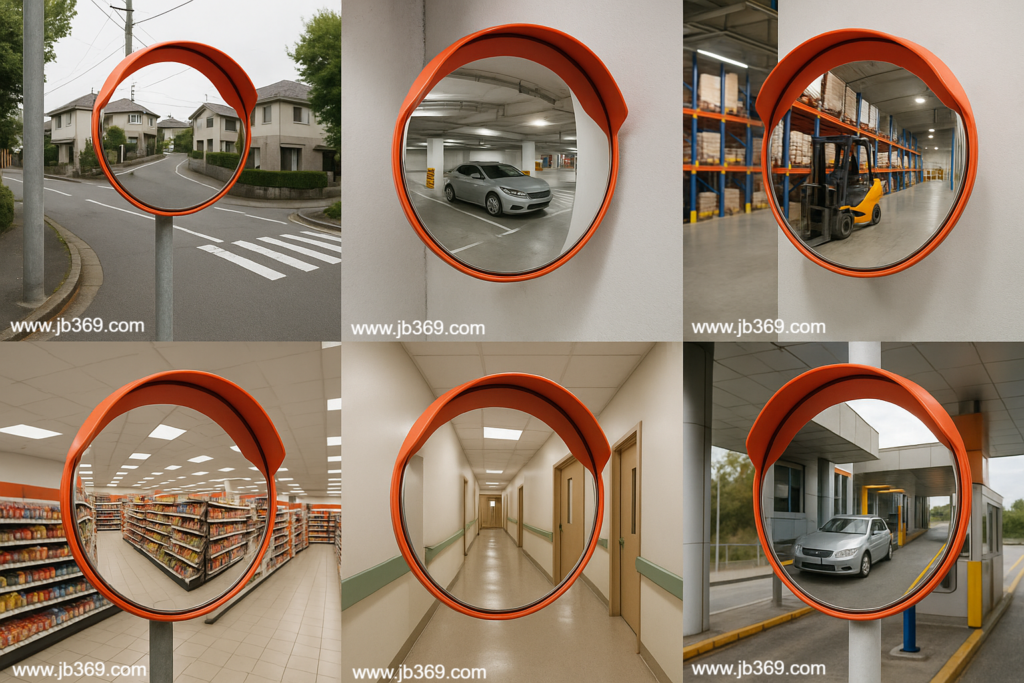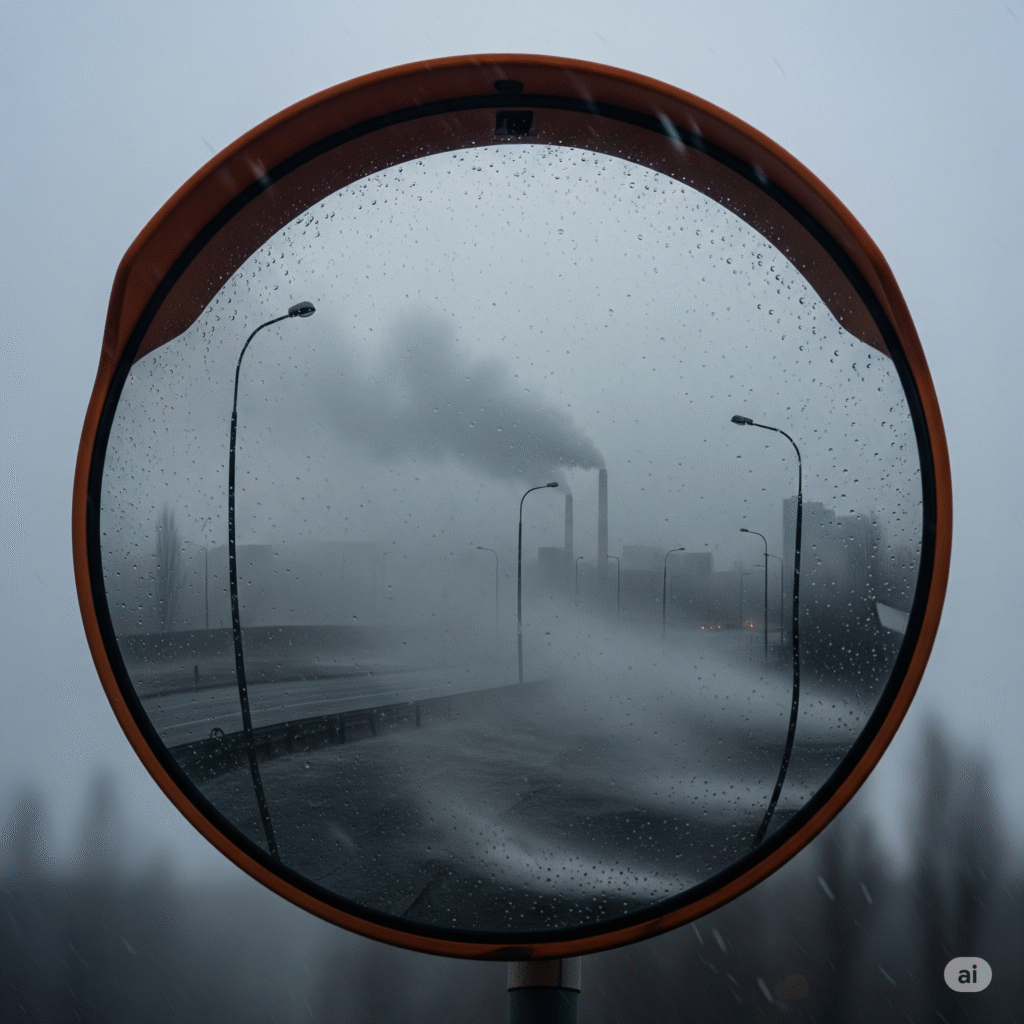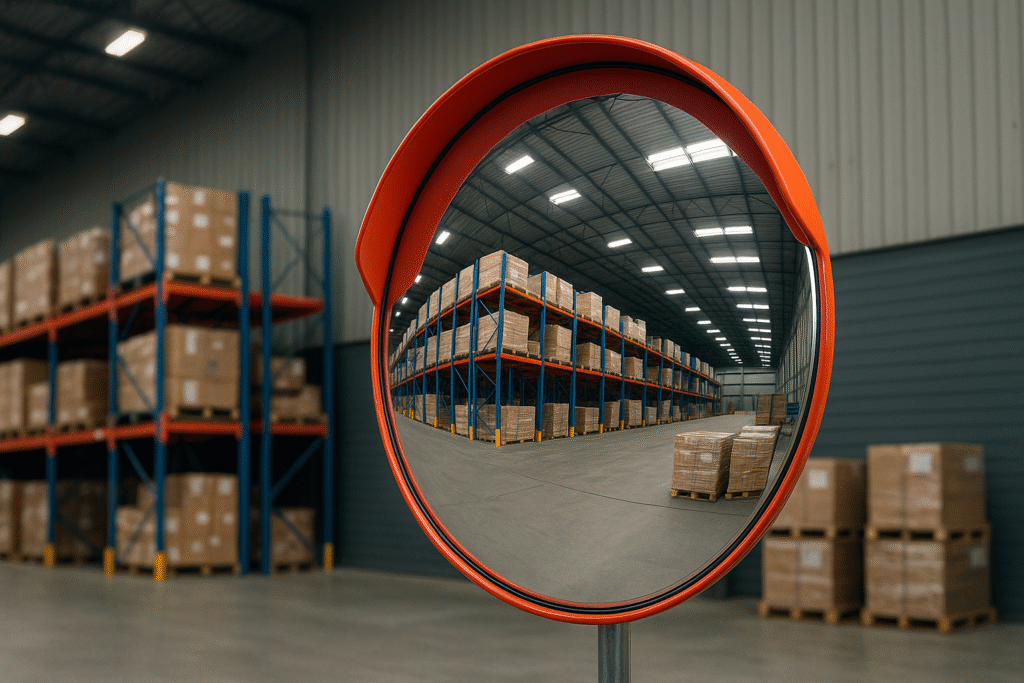Narrow lanes, whether in residential zones, old urban quarters, industrial estates, or countryside roads, present unique road safety challenges. Limited visibility, blind curves, tight vehicle clearances, and pedestrian interactions make these areas frequent sites of minor collisions, near-misses, and, in severe cases, serious road accidents.
Convex road mirrors, also referred to as traffic mirrors or safety mirrors, offer a passive but highly effective way to improve visibility in these restricted environments. By expanding the driver’s field of view and revealing hidden angles, convex mirrors significantly reduce the risk of vehicular and pedestrian accidents.
This article explains in detail how convex road mirrors function, where they should be placed in narrow lanes, the technical specifications that matter, and why they are essential to B2B traffic safety strategies involving municipal authorities, property developers, and traffic management contractors.
Understanding the Risks in Narrow Lanes
Narrow lanes often lack the infrastructure typical of wider roads. There may be:
- No shoulder for maneuvering
- High walls or fences blocking the line of sight
- Limited turning radius for delivery vehicles or emergency responders
- Confined pedestrian walkways, often without designated crossings
- Two-way traffic flow in single-lane passages
These physical constraints increase the likelihood of incidents caused by poor visibility—drivers can’t see oncoming traffic, hidden pedestrians, or approaching cyclists until it’s too late. That’s where convex mirrors play a transformative role.
What Makes Convex Mirrors Ideal for Narrow Lane Safety
Convex traffic mirrors are engineered with a curved reflective surface that offers a panoramic field of vision. Unlike flat mirrors, which reflect a one-to-one image, convex mirrors present a wider area—capturing movement and objects from angles that would otherwise be invisible.
In narrow lanes, this widened visibility can mean the difference between a safe maneuver and a damaging collision.
Key features that make convex mirrors suitable for narrow lanes:
- Wide-Angle Visibility: Provides a horizontal viewing range of up to 160° or more.
- Passive Functionality: No wiring or electricity is needed, making them ideal for retrofitting in old infrastructure.
- Cost Efficiency: Once installed, they require minimal maintenance and offer years of functionality.
- Material Resilience: Modern traffic mirrors use polycarbonate or acrylic lenses that withstand harsh weather and minor impacts.

Typical Placement Scenarios in Narrow Lanes
- At Lane Entrances or Exits
Installing a convex road mirror at the entrance of a narrow lane gives incoming drivers a clear view of the traffic already moving inside. This is critical for tight two-way lanes or when visibility is obscured by walls, vegetation, or buildings.
- At Sharp Corners and Blind Turns
Convex mirrors placed at 90° turns or curved lane sections allow both pedestrians and vehicles to anticipate what’s coming around the corner, reducing sudden braking or swerving.
- At Residential Driveway Junctions
In many old city lanes or villa communities, private driveways open directly onto narrow streets. Mirrors installed across from these junctions give vehicle operators real-time visibility before entering the lane.
- Along Industrial Alleyways or Loading Bays
Narrow industrial roads often handle both foot traffic and delivery vehicles. Convex mirrors placed at warehouse exits or crosswalks help forklift operators and drivers avoid accidents in these constrained spaces.
- Near School Drop-off Points or Urban Pathways
In family-dense neighborhoods or school zones, children may dart into lanes with little warning. Installing convex mirrors in such zones improves reaction times for drivers and guardians alike.

Technical Considerations for Effective Use in Tight Roadways
When choosing convex road mirrors for narrow lane installations, the following technical factors must be considered to ensure optimal performance and safety:
a) Mirror Diameter
Size matters. Small mirrors (30–45 cm) may suffice in short pedestrian lanes or driveways. However, medium (60 cm) to large (80–100 cm) mirrors are recommended for vehicle lanes where drivers need to view traffic 10–25 meters away.
b) Mirror Lens Material
- Polycarbonate: High-impact resistance, shatterproof, UV-resistant. Ideal for outdoor use and high-risk areas.
- Acrylic: Lighter and more affordable, but more prone to cracking under impact.
- Stainless Steel: Best for areas prone to vandalism or extreme conditions.
c) Mounting Hardware and Angle Adjustment
Mirror visibility is only as good as the angle at which it’s installed. B2B buyers should ensure the product comes with adjustable swivel brackets for fine-tuning. Wall-mounted, pole-mounted, and overhead-mounted options should all be supported depending on the site.
d) Weather and Anti-Fog Coatings
Urban and rural narrow lanes may experience rain, snow, fog, or heavy dust. Mirrors with anti-fog coatings or integrated covers offer consistent performance year-round.
e) Visibility Range and Installation Height
Installation height should typically range from 1.8–2.5 meters depending on whether the mirror is for pedestrian or vehicular use. A proper viewing range chart should accompany the mirror, such as “optimal visibility at 15 meters.”

Why Distributors and Contractors Should Include Convex Mirrors in Lane-Specific Safety Solutions
For B2B distributors and project planners working in road safety or infrastructure development, convex traffic mirrors are an underutilized yet high-ROI product line. They are easy to stock, lightweight to ship, and offer customization (frame color, logo printing, packaging) to meet different regulatory and branding needs.
Urban planning departments, private estates, gated community developers, and logistics companies are all potential buyers in need of such products for narrow-lane safety applications.
Adding mirrors to tender proposals or as value-added offerings in road safety packages helps you:
- Diversify your product offering
- Provide immediate solutions to overlooked safety gaps
- Increase customer retention with low-maintenance solutions
- Position your brand as a full-scope traffic safety provider

Case Study: Convex Mirrors in Urban Alleyway Projects
In 2023, a traffic safety upgrade program in Barcelona involved the installation of over 120 convex road mirrors in narrow pedestrian lanes and historical neighborhoods. The project resulted in a 40% drop in minor vehicle-to-vehicle incidents and improved driver compliance at intersections without stop signs.
Similar efforts have been replicated in Seoul, Singapore, and Milan—highlighting that globally, these mirrors are becoming standard safety gear in narrow zones.
Conclusion
Convex road mirrors are a proven and practical way to prevent accidents in narrow lanes. Their passive design, wide-angle visibility, and cost-effectiveness make them ideal for constrained urban and rural roads. For B2B buyers, including traffic equipment importers, municipal contractors, and safety product distributors, convex mirrors offer a high-demand, low-maintenance, and regulation-friendly product to enhance lane safety across various sectors.
If your clients are facing visibility issues in tight traffic zones, a properly selected and installed convex mirror might be the most efficient and effective solution you can offer.
Looking for a custom convex mirror manufacturer or supplier? Struggling to find the right factory to bring your vision to life? We’ve got you covered! At our place, we craft top-quality convex mirrors with precision and care. Big or small, your needs are our mission. Let’s launch your mirror project and take your product line to the next level! Click here to contact
